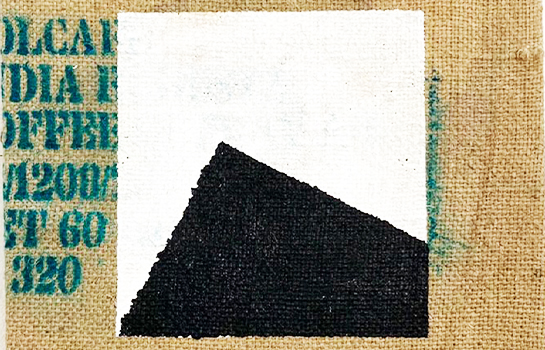
Antonio Bokel reveals a constant crossing between art and the fabric of urban life, as constitutive parts of his symbolic universe. He uses this experience of the city as existential sequences – there he builds his referential space, there he seems to invent a territory, there he intends to constitute an aesthetic and spatial extension in a broader dimension.
In this area of intersection, there is a capacity for poetic improvisation from the assimilation of the most varied materials and supports, such as enigmatic objects, urban utensils, insertion of letters, wordplays or literary fragments, which transit in the murals, on the surfaces of canvases, photographs, sculptures or spatial installations. But it is in his painting that we find the chords of his field of action, indicative of an integrating force of his aesthetic concerns, balancing colors, shapes and volumes in a mosaic of rhythmic brushstrokes that bring out the asymmetries of the world.
In this troubled territory, the artist evokes a reflection on contemporary urban space. His artistic production is not an isolated phenomenon in the studio, but it inscribes itself in the world, in a public sphere, by embodying its emergence on the city walls – both simultaneously welcome his pictorial practice and create a fusion between the work and the world. .
Antonio Bokel claims to be in the world, to bring together experiences, to leave visible traces in the public eye and not just behind four walls. His works are true visual manifestos and despite presenting a rich diversity, they are grouped through a common language, claiming a plastic meaning linked to the images and dissonances of urban life.
His strategy of reading figuration is manifested through aspects from the language of pop art, with a visible influence from Andy Warhol, Jean Michel Basquiat and Keith Haring; in the use of elements of popular culture, such as illustrations from magazines, newspapers and their expressive compositions – carry an emotional impetuosity, bring random symbols and motifs with strong critical content, which are confronted with the rawness and rudeness of urban walls. The artist turned drawn painting into his main technique, dissolving figurative systems and redefining forms in space, producing a new generation of images. Progressive undoing becomes a constant exercise and the coexistence of disparate forms announces a thought of discontinuity and visual noises incorporated into his visual culture.
His gestural, instinctive, spontaneous painting finds its roots in his admiration for certain artists who punctuated the contemporary avant-garde and begins to observe the vocabulary linked to the constructive tradition. Among his elective affinities are Amílcar de Castro and Mira Schendel. The shapes, now arranged through a game of geometric derivations, are associated with a controlled, more orderly nature, different from the urgency of graffiti. The compositional construction brings an opaque material, carried out by the addition of a spiral of successive layers that create a surface converted into the density of a wall, an endless palimpsest of colors enhanced by the presence of geometric shapes, which swell through dynamic tensions.
Antonio Bokel works in the context of photography and adopts a procedure that accumulates a kind of memorialist look, by capturing the first moment of direct graffiti on the city walls. Bokel recovers the image he created and reinscribes it through photographic recovery. A kind of deconstruction of images that do not seem interested in defining themselves, as if they were fragments that embody a constant process of integration and disintegration and reintegration, always on the ambiguous limit of ephemerality and permanence. Subsequently, the artist uses graphic experiences or the silkscreen itself and ends with a pictorial intervention at the conclusion of his artistic process.
Vanda Klabin
➤ exhibitions
➤ press